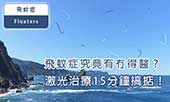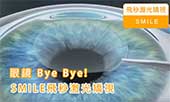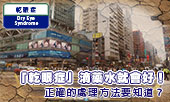[ 會員#20405 ] janice
可做手術嗎?
病患者女 - 44歲
MR CERVICAL SPINE CLINICAL HISTORY; Back & neck injury after a fall on back recently. Left LL rad. pain. Swelling++ spasm++. ? PID L/C spine. JECHNJOUE; Sagittal: Tl, T2, T2*GRE Axial: T2*GRE(C3-Tl), T2/FS(C3-Tl)
Summary FINDINGS; There is a loss of lordosis due to muscular spasm. The cervical alignment is otherwise unremarkable and posterior alignment is smooth. There is no abnormal signal seen in the vertebral bodies. There is no increased signal on T2 FS images to suggest bone oedema or bone contusion. A fracture is also not seen. Disc space is narrowed at C4/5, C5/6 and C6/7. Signal loss is seen at C4/5, C5/6 and C617cervical discs due to degeneration and dehydration. No abnormal signal in the end-plate. No evidence of discitis. At C3/4, central disc protrusion is seen with thecal sac indentation. At C4/5, broad base disc protrusion is seen with thecal sac indentation and posterior osteophytes.
At CS/6, broad base right lateral disc protrusion is seen with encroachment of right exit foramen and thecal sac indentation. At C6l7, broad base bilateral disc protrusion is seen with encroachment of both exit foramen and thecal sac indentation. There is no abnormality seen in the posterior apophyseal joints. No thickening is seen. There is no abnormal signal in the cord. The dural sac is also normal. There is no abnormality seen in the paravertebral region. No paravertebra1 soft tissue swelling or oedema is seen. COMMENT:
l. C3/4 central disc protrusion with theca1 sac indentation.
2. C4/5, broad base disc protrusion with theca1 sac indentation and posterior osteophytes.
3. C5/6, broad base right lateral disc protrusion with encroachment of right exit foramen and theca1 sac indentation.
4. C6l7, broad base bilateral disc protrusion with encroachment of both exit foramen and thecal sac indentation.
MR LUMBAR SPINE CLINICAL HISTORY: Back & neck injury after a fall on back recently. Left LL rad. pain. Swelling++ spasm++. ? PID L/C spine. TECHNIQUE: Sagittal: Tl, T2, T2/FS Axial: Tl(L3-Sl), T2(L3-Sl) Summary FINDINGS: There is a loss of lordosis due to muscular spasm. The posterior alignment is smooth. Subcutaneous soft tissue swelling and oedema are seen at the back from L 1 to S 1. There is no abnormal signal seen in the vertebral bodies. There is no increased signal on T2 FS images to suggest bone oedema or bone contusion. A fracture is also not seen. There is no disc space narrowing. There is signal loss on T2 at L4/5 lumbar disc due to degeneration and dehydration. There is mild posterior facet joints thickening. At L4/5, substantial central left lateral disc protrusion 1s seen with thecal sac indentation. Encroachment of both exit foramen noted.
There is no abnormal signal in the cord. The conus ends at the L 1 level. The cauda equina appeared unremarkable. The spinal canal is capacious and no canal stenosis is detected. There is no abnormality seen in the paravertebral region. No paravertebral soft tissue swelling or oedema is seen. COMMENT: 1. Desiccated L4/5 disc. 2. Mild posterior facet joints thickening. 3. L4/5 substantial central left lateral disc protrusion with thecal sac indentation and encroachment of both exit foramen.
MR CERVICAL SPINE CLINICAL HISTORY; Back & neck injury after a fall on back recently. Left LL rad. pain. Swelling++ spasm++. ? PID L/C spine. JECHNJOUE; Sagittal: Tl, T2, T2*GRE Axial: T2*GRE(C3-Tl), T2/FS(C3-Tl)
Summary FINDINGS; There is a loss of lordosis due to muscular spasm. The cervical alignment is otherwise unremarkable and posterior alignment is smooth. There is no abnormal signal seen in the vertebral bodies. There is no increased signal on T2 FS images to suggest bone oedema or bone contusion. A fracture is also not seen. Disc space is narrowed at C4/5, C5/6 and C6/7. Signal loss is seen at C4/5, C5/6 and C617cervical discs due to degeneration and dehydration. No abnormal signal in the end-plate. No evidence of discitis. At C3/4, central disc protrusion is seen with thecal sac indentation. At C4/5, broad base disc protrusion is seen with thecal sac indentation and posterior osteophytes.
At CS/6, broad base right lateral disc protrusion is seen with encroachment of right exit foramen and thecal sac indentation. At C6l7, broad base bilateral disc protrusion is seen with encroachment of both exit foramen and thecal sac indentation. There is no abnormality seen in the posterior apophyseal joints. No thickening is seen. There is no abnormal signal in the cord. The dural sac is also normal. There is no abnormality seen in the paravertebral region. No paravertebra1 soft tissue swelling or oedema is seen. COMMENT:
l. C3/4 central disc protrusion with theca1 sac indentation.
2. C4/5, broad base disc protrusion with theca1 sac indentation and posterior osteophytes.
3. C5/6, broad base right lateral disc protrusion with encroachment of right exit foramen and theca1 sac indentation.
4. C6l7, broad base bilateral disc protrusion with encroachment of both exit foramen and thecal sac indentation.
MR LUMBAR SPINE CLINICAL HISTORY: Back & neck injury after a fall on back recently. Left LL rad. pain. Swelling++ spasm++. ? PID L/C spine. TECHNIQUE: Sagittal: Tl, T2, T2/FS Axial: Tl(L3-Sl), T2(L3-Sl) Summary FINDINGS: There is a loss of lordosis due to muscular spasm. The posterior alignment is smooth. Subcutaneous soft tissue swelling and oedema are seen at the back from L 1 to S 1. There is no abnormal signal seen in the vertebral bodies. There is no increased signal on T2 FS images to suggest bone oedema or bone contusion. A fracture is also not seen. There is no disc space narrowing. There is signal loss on T2 at L4/5 lumbar disc due to degeneration and dehydration. There is mild posterior facet joints thickening. At L4/5, substantial central left lateral disc protrusion 1s seen with thecal sac indentation. Encroachment of both exit foramen noted.
There is no abnormal signal in the cord. The conus ends at the L 1 level. The cauda equina appeared unremarkable. The spinal canal is capacious and no canal stenosis is detected. There is no abnormality seen in the paravertebral region. No paravertebral soft tissue swelling or oedema is seen. COMMENT: 1. Desiccated L4/5 disc. 2. Mild posterior facet joints thickening. 3. L4/5 substantial central left lateral disc protrusion with thecal sac indentation and encroachment of both exit foramen.
你好,多謝讀者你的來信。
單從一份磁力共振報告是不足以去判斷確實情況,需要詳細問症及身體檢查先可以作出較準確的分析診斷,建議需儘快尋求相熟的骨科醫生作出精確的診斷。
祝 生活愉快
單從一份磁力共振報告是不足以去判斷確實情況,需要詳細問症及身體檢查先可以作出較準確的分析診斷,建議需儘快尋求相熟的骨科醫生作出精確的診斷。
祝 生活愉快
以上資料只供參考,不能作診症用途,
請與家庭醫生查詢並作出適合治療。
如有身體不適請即求診,切勿延誤治療。
若資料有所漏誤,本網及相關資料提供者恕不負責。
請與家庭醫生查詢並作出適合治療。
如有身體不適請即求診,切勿延誤治療。
若資料有所漏誤,本網及相關資料提供者恕不負責。

相關信箱答問
[ 會員#21762 ] 趙小姐 : 懷疑食道癌
[ 會員#17023 ] Wong wah : 肝腫瘤良性
[ 會員#27466 ] JUDY PAU : 長者頭痛頭暈
[ 會員# ] Isabella : 照左胃鏡感染幽門螺旋菌
[ 會員#28452 ] Maymay koo : 肺部有黑色一舊物體


 即時提問 ?
即時提問 ?








